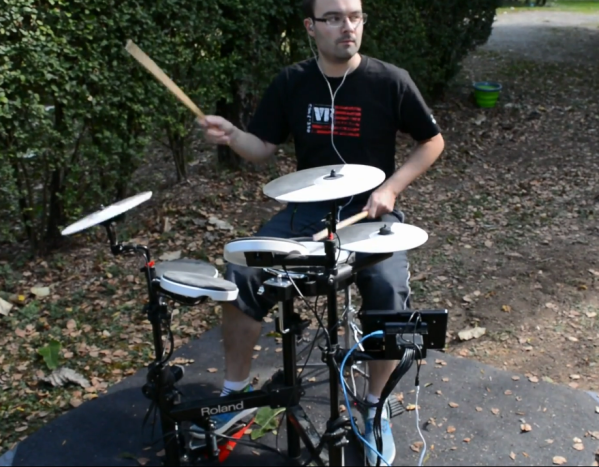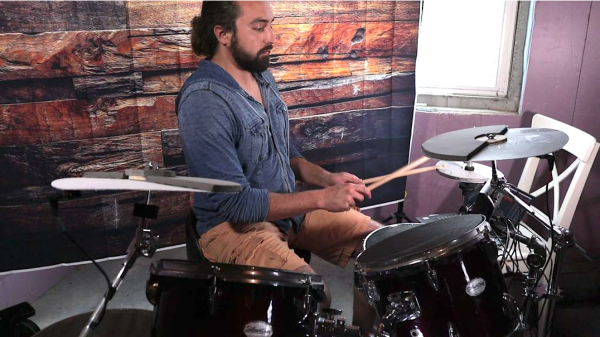Drums! You hit them, and they vibrate. It’s kind of fun. Piezoelectric elements can create electric current when they vibrate. [Will Dana] put two and two together to try and charge his phone on his YouTube channel WillsBuilds embedded below.
It worked… about as well as you might expect. Which is to say: not very well. The random piezo elements [Will] glues to his drum almost certainly aren’t optimized for this use case. Adding weight helps, but it doesn’t look like a tuned system. Even if it was, piezoelectric generators aren’t terribly efficient by nature, and the (small) losses from the required bridge rectifiers aren’t helping. An energy-harvesting chip might have worked better, but it probably wouldn’t have worked well.
Since he cannot produce enough voltage in real time, [Will] opts to charge a capacitor bank that he can dump into the phone once it gets enough charge in it to register with the phone’s circuitry. It takes about 30 minutes drumming to charge the capacitors in parallel, before switching to series to get the voltage up to discharge. The capacitors drain in about a quarter second, probably to no measurable result– but the phone does read as “charging”, which was the goal.
Did it work? Technically, yes. The phone was “charging”. Is it practical? Certainly not. Is it a hack? Undeniably so.
Continue reading “March To The Beat Of Your Own Piezoelectric Drum”


















